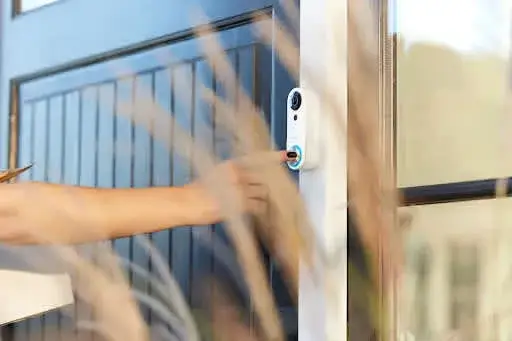The answer to this question depends on the type and settings of your smart doorbell. Some smart doorbells record all the time, while others only record when they detect motion or someone rings the bell. In this article, we will explain the differences between these two modes of recording, the pros and cons of each, and how to choose the best option for your home security and privacy.
Continuous Recording vs. Motion-Activated Recording
Continuous recording means that your smart doorbell records everything that happens in front of your door, 24/7, and stores the footage in the cloud or on a local device. This way, you can access the video history anytime and review what happened at any point in time. Continuous recording is usually offered as a premium feature by some smart doorbell brands, such as Nest Hello and Ring Video Doorbell Pro, and requires a subscription fee to access the cloud storage.
Motion-activated recording means that your smart doorbell only records when it senses movement or someone presses the button. This way, you can save battery life and storage space, and only get notified when something important happens. Motion-activated recording is the default mode for most smart doorbells, such as Arlo Video Doorbell and Eufy Video Doorbell, and does not require a subscription fee to access the cloud or local storage.
Pros and Cons of Each Recording Mode
Both continuous recording and motion-activated recording have their advantages and disadvantages, depending on your needs and preferences. Here are some of the pros and cons of each mode:
Pros of Continuous Recording
- You can capture everything that happens in front of your door, even if the motion sensor misses something or someone tries to tamper with the device.
- You can review the footage anytime and find evidence of any suspicious activity, such as package theft, vandalism, or break-ins.
- You can create custom zones and filters to focus on the areas and events that matter to you, such as people, animals, vehicles, or sounds.
Cons of Continuous Recording
- You need to pay a monthly or annual fee to access the cloud storage, which can add up over time and make the device more expensive.
- You need to have a reliable and fast internet connection to upload and download the video data, which can consume a lot of bandwidth and affect your other online activities.
- You may compromise your privacy and security if the cloud storage is hacked or accessed by unauthorized parties, such as hackers, law enforcement, or advertisers.
Pros of Motion-Activated Recording
- You can save battery life and storage space, as the device only records when something happens, and not when there is nothing to see.
- You can avoid unnecessary notifications and alerts, as the device only sends you a message when it detects motion or someone rings the bell.
- You can enjoy free or low-cost storage options, such as local SD cards or encrypted cloud storage, which do not require a subscription fee or a constant internet connection.
Cons of Motion-Activated Recording
- You may miss some important events or details, as the motion sensor may not be sensitive or accurate enough to capture everything that happens in front of your door.
- You may get false or delayed notifications and alerts, as the device may be triggered by irrelevant or unwanted movements, such as passing cars, animals, or shadows, or take some time to start recording after detecting motion.
- You may have limited or no access to the video history, as the device may overwrite or delete the old footage after a certain period of time or when the storage is full.
How to Choose the Best Recording Mode for Your Smart Doorbell
The best recording mode for your smart doorbell depends on several factors, such as your budget, internet speed, storage preference, security level, and privacy concern. Here are some questions to ask yourself before choosing a recording mode:
- How much are you willing to spend on the device and the storage service?
- How fast and reliable is your internet connection?
- How much storage space do you need or want?
- How often do you want to review the footage or access the video history?
- How important is your privacy and security to you and your family?
Based on your answers, you can decide whether continuous recording or motion-activated recording is more suitable for your smart doorbell. You can also compare different models and brands of smart doorbells and see which one offers the features and functions that you need and want.
Conclusion
Smart doorbells are a great way to enhance your home security and convenience, but they also come with different recording modes that have their own pros and cons. Some smart doorbells record all the time, while others only record when they detect motion or someone rings the bell. The best recording mode for your smart doorbell depends on your needs and preferences, as well as your budget, internet speed, storage preference, security level, and privacy concern. By asking yourself some questions and comparing different options, you can choose the best recording mode for your smart doorbell and enjoy its benefits without any drawbacks.

